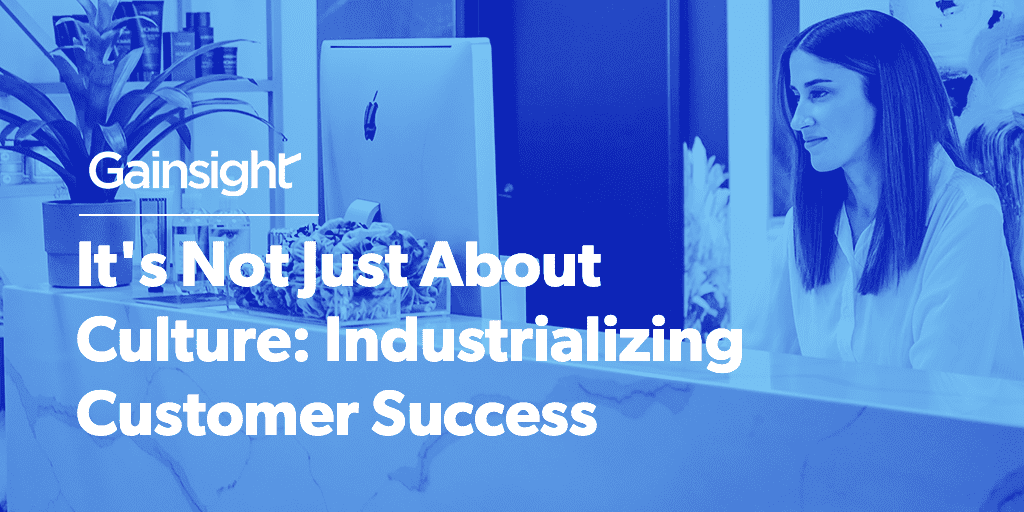As you may know, I meet a lot of customers.
As such, I often find myself waiting in many tech company lobbies. I’ve done my fair share of Envoy lobby sign-ins (I think I’ve signed every NDA in the world!) and have even resorted to eating office mints for the nutritional value.
When you sit in a company’s entrance, you get exposed to the business’ culture. You notice the little things like how the front desk people treat guests—and how the employees treat the front desk people. You get to see the face they show to world, and more explicitly, you often see the values of the company.

I’ve seen values on plaques. I’ve seen values on TVs. I’ve even seen values on poker chips!
And you know what? Nearly every company I’ve seen has a value around “customer centricity” or “customer obsession” or “the customer is #1.”
If “customer success is all about culture,” and every company has a value around it, why do we still have such a long way to go in customer success? I don’t want to turn this into yet
another cheap denunciation of hypocrisy in business—we all know business can be better. In this blog, I want to offer a solution.
How to go beyond culture: Industrialization
In a recent meeting with a CEO, I heard that solution. This leader of a large software company told me that while a culture shift is clearly the beginning of a company transformation, it’s not the end.
Just because you have great people aligned around a mission doesn’t mean your customers will consistently have great outcomes and experiences:
- What about the new teammate who has the company’s values in their heart but hasn’t been enabled and trained on how to implement the best practices the company espouses?
- What about the client who knows that the experience they get will vary based upon the person they deal with in your company?
- What about the issues between the seams in the company—where everyone is acting rightly in their silo, but collectively the client isn’t getting the desired result?
That’s starting to sound like a process issue—just improve your training, customer experience, and cross-functional cohesion. But as I learned, it’s much more than fine-tuning the problem areas where values are falling short.
The CEO went on to tell me that the next step is to “industrialize” customer success across the company. To move it from an art to a science. In the Industrial Revolution, new technology enabled workers to specialize and allowed manufacturers to standardize, which powered companies to scale. It was much more than incrementally improvement—it was transformative at a fundamental level.
This CEO was looking at customer success industrialization across three specific vectors, which I’ll align to those three principles of the Industrial Revolution: specialization, standardization, and scale.
- Specialization: New teammates should ramp quickly to achieve best-practice competency.
- Standardization: Clients can trust in a consistently excellent experience across the company.
- Scale: Every teammate should have the full context of what’s happening at the client at their fingertips.
In addition, the CEO wanted to be able to measure this process like other parts of the business that have been “industrialized.” How effective is teammate onboarding? How quickly is it happening? What is the comprehensive customer experience and where are the gaps? How “customer-centric” is the company across functions? In order to really measure these, there are some long-standing assumptions we need to rethink from first principles—check out this blog I wrote about re-examining customer success strategy.
3 Technologies to industrialize your CS org
So whether the word is industrialize, operationalize, standardize, automate, or something else, we know for sure that CS has to go beyond words on a wall. In many ways, I see that concept (industrializing customer success) as the mission of Gainsight technology. I’ll give you three examples that align to the the three strategies we’ve been talking about in this blog:
- Timeline is a feature in Gainsight that makes logging interactions with customers and insights gleaned from those interactions easy and globally visible across the company. When new CSMs take on their portfolios, the entire context of the customer and their history are at the CSM’s fingertips.
- Journey Orchestrator lets you craft a complete end-to-end journey with automated calls-to-action and right-time/right-message communications that can be sent conditionally, through in-app, one-to-many, and in-person channels.
- A true 360 View of your customers is the centerpiece of a companywide customer success vision. From CSM to CEO, everyone can pull critical data about any given customer onto their screen with one click—or one natural language query in Slack.
If you’ve put up the posters around your office lobby, congratulations! You’ve taken the first step. But in order to channel those values into transformation, you need technology to make it happen: culture + technology = change.


